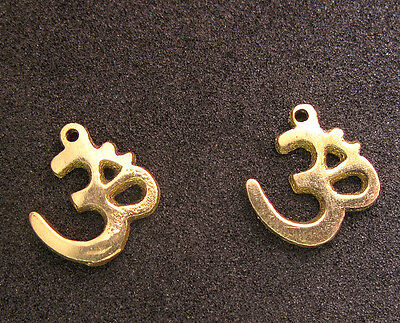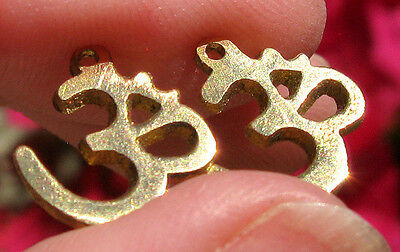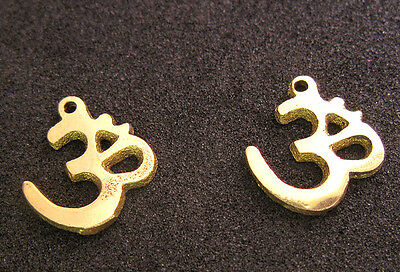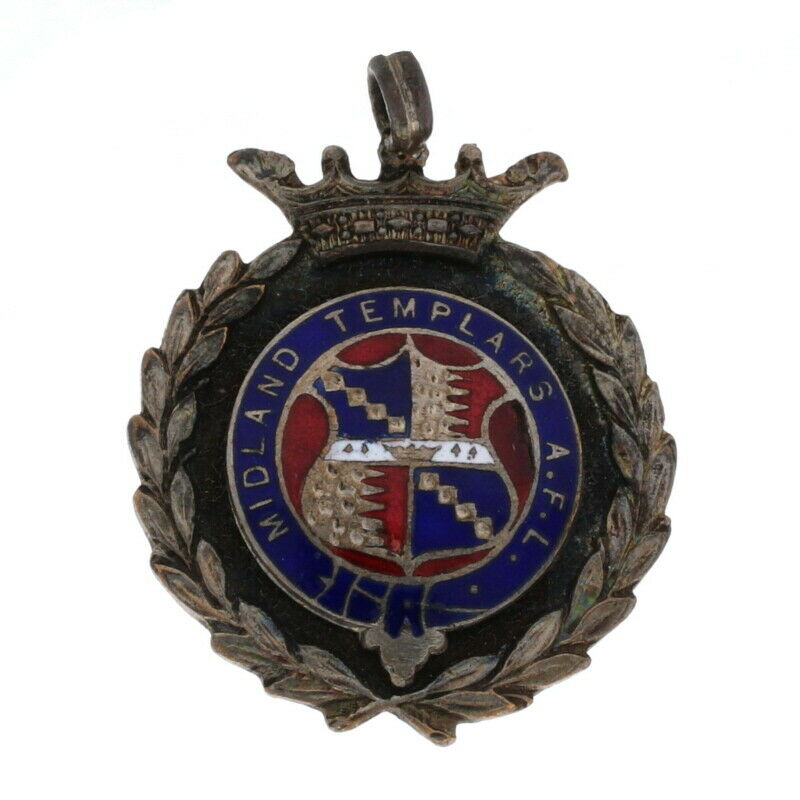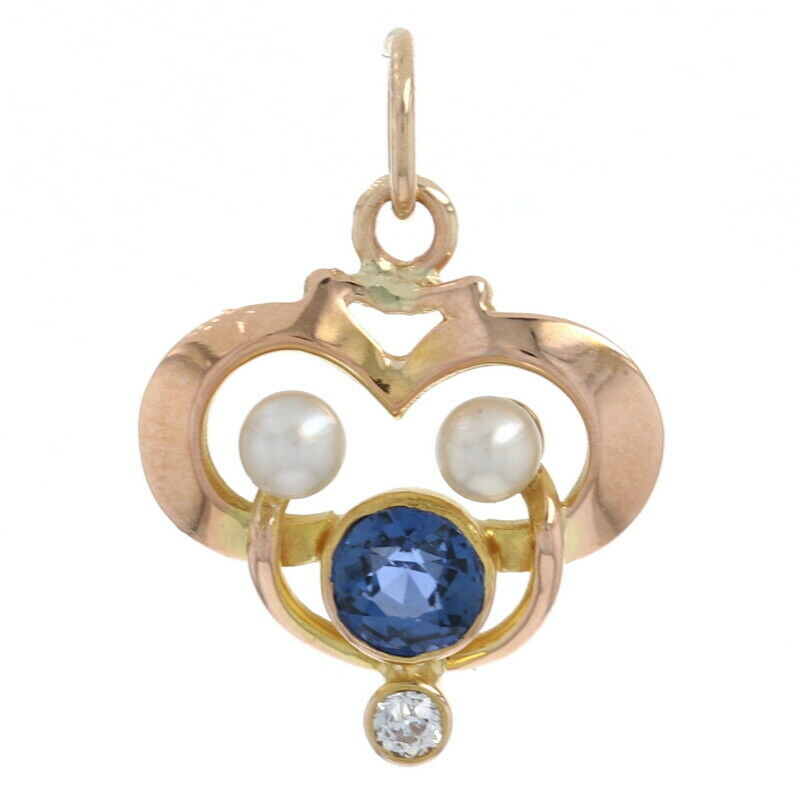-40%
2pc PAIR Gold OHM Pendant Brass Charm Antique Yoga Buddha DIY Earrings Buddhism
$ 1.05
- Description
- Size Guide
Description
Hi there, I am selling these nice PAIR ofgold OHM symbol
charms, perfect and ready for you to make them into earrings, or whatever makes you happy!
These TWO charms together for the pair of them weigh 5.40 carats, which is 1.08 grams and it measures 12 mm by 11 mm by 1.5 mm.
THIS LISTING IS FOR 2 CHARMS, you will get 2 charms, just like the photos show.
They are solid metal, and gold colored, I think they are brass, but I am not entirely sure.
If you have any questions, do not hesitate to ask me.
Have fun bidding, and know that I will ship this out the same day as the payment clears. Thanks so much for visiting my auction and have a great day:>)
Om
From Wikipedia, the free encyclopedia
Jump to navigationJump to search
This article is about the sacred sound and spiritual icon in Hindu religion. For movies and other uses, see Om (disambiguation).
"Aum" redirects here. For other uses, see Aum (disambiguation).
The "Om" or "Aum" symbol in Devanagari
This article contains Indic text. Without proper rendering support, you may see question marks or boxes, misplaced vowels or missing conjuncts instead of Indic text.
Om (About this sound listen (help·info), IAST: Auṃ or Oṃ, Devanagari: ॐ) is a sacred sound and a spiritual icon in Hindu religion.[1][2] It is also a mantra in Hinduism, Buddhism, Jainism[3][4], and Sikhism.
Om is part of the iconography found in ancient and medieval era manuscripts, temples, monasteries and spiritual retreats in Hinduism, Buddhism, and Jainism.[5][6] The symbol has a spiritual meaning in all Indian dharmas, but the meaning and connotations of Om vary between the diverse schools within and across the various traditions.
In Hinduism, Om is one of the most important spiritual symbols.[7][8] It refers to Atman (soul, self within) and Brahman (ultimate reality, entirety of the universe, truth, divine, supreme spirit, cosmic principles, knowledge).[9][10][11] The syllable is often found at the beginning and the end of chapters in the Vedas, the Upanishads, and other Hindu texts.[11] It is a sacred spiritual incantation made before and during the recitation of spiritual texts, during puja and private prayers, in ceremonies of rites of passages (sanskara) such as weddings, and sometimes during meditative and spiritual activities such as Yoga.[12][13]
The syllable is also referred to as omkara (ओंकार, oṃkāra), aumkara (औंकार, auṃkāra), and pranava (प्रणव, praṇava).[14]
Contents
1
Origin and meaning
2
Written representation
3
Hinduism
3.1
Upanishads
3.1.1
Chandogya Upanishad
3.1.2
Katho Upanishad
3.1.3
Maitri Upanishad
3.1.4
Mundaka Upanishad
3.1.5
Mandukya Upanishad
3.1.6
Shvetashvatara Upanishad
3.1.7
Aitareya Aranyaka
3.2
Bhagavad Gita
3.3
Yoga Sutra
3.4
Puranic Hinduism
4
Jainism
5
Buddhism
5.1
Tibetan Buddhism (Vajrayana)
5.2
Niō guardian kings and Komainu lion-dogs
6
Sikhism
7
Modern reception
8
References
9
Sources
10
External links
Origin and meaning
The syllable Om is referred to as praṇava.[15][16] Other used terms are akṣara (literally, letter of the alphabet, imperishable, immutable) or ekākṣara (one letter of the alphabet), and omkāra (literally, beginning, female divine energy).[17][18][19][20] Udgitha, a word found in Sama Veda and bhasya (commentaries) based on it, is also used as a name of the syllable.[21]
The syllable Om is first mentioned in the Upanishads, the mystical texts associated with the Vedanta philosophy. It has variously been associated with concepts of "cosmic sound" or "mystical syllable" or "affirmation to something divine", or as symbolism for abstract spiritual concepts in the Upanishads.[11] In the Aranyaka and the Brahmana layers of Vedic texts, the syllable is so widespread and linked to knowledge, that it stands for the "whole of Veda".[11] The etymological foundations of Om are repeatedly discussed in the oldest layers of the Vedantic texts (the early Upanishads).[22][23] The Aitareya Brahmana of Rig Veda, in section 5.32, for example suggests that the three phonetic components of Om (pronounced AUM) correspond to the three stages of cosmic creation, and when it is read or said, it celebrates the creative powers of the universe.[11][24] The Brahmana layer of Vedic texts equate Om with Bhur-bhuvah-Svah, the latter symbolizing "the whole Veda". They offer various shades of meaning to Om, such as it being "the universe beyond the sun", or that which is "mysterious and inexhaustible", or "the infinite language, the infinite knowledge", or "essence of breath, life, everything that exists", or that "with which one is liberated".[11] The Sama Veda, the poetical Veda, orthographically maps Om to the audible, the musical truths in its numerous variations (Oum, Aum, Ovā Ovā Ovā Um, etc.) and then attempts to extract musical meters from it.[11]
The syllable Om evolves to mean many abstract ideas in the earliest Upanishads. Max Müller and other scholars state that these philosophical texts recommend Om as a "tool for meditation", explain various meanings that the syllable may be in the mind of one meditating, ranging from "artificial and senseless" to "highest concepts such as the cause of the Universe, essence of life, Brahman, Atman, and Self-knowledge".[25][26]
Written representation
Phonologically, the syllable ओम् represents /aum/, which is regularly monophthongised to [õː] in Sanskrit phonology. When occurring within spoken Sanskrit, the syllable is subject to the normal rules of sandhi in Sanskrit grammar, however with the additional peculiarity that after preceding a or ā, the au of aum does not form vriddhi (au) but guna (o) per Pāṇini 6.1.95 (i.e. 'om'). It is sometimes also written ओ३म् (o̿m [õːːm]), notably by Arya Samaj, where ३ (i.e., the digit "3") is pluta ("three times as long"), indicating a length of three morae (that is, the time it takes to say three syllables) — an overlong nasalised close-mid back rounded vowel.
The Om symbol Aum.svg is a ligature in Devanagari, combining ओ (au) and chandrabindu (ँ, ṃ). In Unicode, the symbol is encoded at U+0950 ॐ Devanagari OM and at U+1F549 🕉 OM Symbol ("generic symbol independent of Devanagari font").
The Om or Aum symbol is found on ancient coins, in regional scripts. In Sri Lanka, Anuradhapura era coins (dated from the 1st to 4th centuries) are embossed with Aum along with other symbols.[27] Nagari or Devanagari representations are found epigraphically on medieval sculpture, such as the dancing Shiva (ca. 10th to 12th century); Joseph Campbell (1949) even argued that the dance posture itself can be taken to represent AUM as a symbol of the entirety of "consciousness, universe" and "the message that God is within a person and without".[28]
The Om symbol, with epigraphical variations, is also found in many southeast Asian countries. For example, it is called Unalom or Aum in Thailand and has been a part of various flags and official emblems such as in the Thong Chom Klao of King Rama IV (r. 1851–1868).[29] The Cambodian official seal has similarly incorporated the Aum symbol.[30] In traditional Chinese characters, it is written as 唵 (pinyin – ǎn), and as 嗡 (pinyin – wēng) in simplified Chinese characters.[citation needed]
There have been proposals that the Om syllable may already have had written representations in Brahmi script, dating to before the Common Era. A proposal by Deb (1848) held that the swastika is "a monogrammatic representation of the syllable Om, wherein two Brahmi /o/ characters (U+11011 𑀑 Brahmi letter O) were superposed crosswise and the 'm' was represented by dot".[31] A commentary in Nature considers this theory questionable and unproven.[32] Roy (2011) proposed that Om was represented using the Brahmi symbols for "A", "U" and "M" (𑀅 𑀉 𑀫), and that this may have influenced the unusual epigraphical features of the symbol ॐ for Om.[33][34]
Om in various scripts
in Devanagari, Gujarati, Sourashtri & Historical Marathi Script (Modi)
(Assamese, Bengali, Oriya)[35]
Arya Samaj
Tamil[36]
Kannada[37]
Telugu[37]
Malayalam[38]
Grantha[39]
Siddham[40]
Jain symbol
Chinese[41]
Tibetan[42]
Bali (Indonesia)[43]
Java (Indonesia)[44]
Hinduism
Part of a series on
Hinduism
Om symbol.svg
Hindu History
Concepts[show]
Schools[show]
Deities[show]
Texts[show]
Practices[show]
Gurus, saints, philosophers[show]
Society[show]
Other topics[show]
Glossary of Hinduism terms
Aum Om red.svg Hinduism portal
v t e
Om Symbol at Kanaka Durga Temple, Vijayawada
Om came to be used as a standard utterance at the beginning of mantras, chants or citations taken from the Vedas. For example, the Gayatri mantra, which consists of a verse from the Rigveda Samhita (RV 3.62.10), is prefixed not just by Om but by Om followed by the formula bhūr bhuvaḥ svaḥ.[45] Such recitations continue to be in use in Hinduism, with many major incantations and ceremonial functions beginning and ending with Om.[4] Maheshwarananda (2002) suggests that the Om reflects the cosmological beliefs in Hinduism, as the primordial sound associated with the creation of universe from nothing.[46]
Upanishads
The syllable "Om" is described with various meanings in the Upanishads. Descriptions include "the sacred sound, the Yes!, the Vedas, the Udgitha (song of the universe), the infinite, the all encompassing, the whole world, the truth, the ultimate reality, the finest essence, the cause of the Universe, the essence of life, the Brahman, the Atman, the vehicle of deepest knowledge, and Self-knowledge".[26]
Chandogya Upanishad
Om is a common symbol found in the ancient texts of Hinduism, such as in the first line of Rig veda (top), as well as an icon in temples and spiritual retreats.
The Chandogya Upanishad is one of the oldest Upanishads of Hinduism. It opens with the recommendation that "let a man meditate on Om".[47] It calls the syllable Om as udgitha (उद्गीथ, song, chant), and asserts that the significance of the syllable is thus: the essence of all beings is earth, the essence of earth is water, the essence of water are the plants, the essence of plants is man, the essence of man is speech, the essence of speech is the Rig Veda, the essence of the Rig Veda is the Sama Veda, and the essence of Sama Veda is the udgitha (song, Om).[48]
Rik (ऋच्, Ṛc) is speech, states the text, and Sāman (सामन्) is breath; they are pairs, and because they have love for each other, speech and breath find themselves together and mate to produce a song.[47][48] The highest song is Om, asserts section 1.1 of Chandogya Upanishad. It is the symbol of awe, of reverence, of threefold knowledge because Adhvaryu invokes it, the Hotr recites it, and Udgatr sings it.[48][49]
The second volume of the first chapter continues its discussion of syllable Om, explaining its use as a struggle between Devas (gods) and Asuras (demons).[50] Max Muller states that this struggle between gods and demons is considered allegorical by ancient Indian scholars, as good and evil inclinations within man, respectively.[51] The legend in section 1.2 of Chandogya Upanishad states that gods took the Udgitha (song of Om) unto themselves, thinking, "with this song we shall overcome the demons".[52] The syllable Om is thus implied as that which inspires the good inclinations within each person.[51][52]
Chandogya Upanishad's exposition of syllable Om in its opening chapter combines etymological speculations, symbolism, metric structure and philosophical themes.[49][53] In the second chapter of the Chandogya Upanishad, the meaning and significance of Om evolves into a philosophical discourse, such as in section 2.10 where Om is linked to the Highest Self,[54] and section 2.23 where the text asserts Om is the essence of three forms of knowledge, Om is Brahman and "Om is all this [observed world]".[55]
Katho Upanishad
The Katho Upanishad is the legendary story of a little boy, Nachiketa – the son of sage Vajasravasa – who meets Yama, the Indian deity of death. Their conversation evolves to a discussion of the nature of man, knowledge, Atman (Soul, Self) and moksha (liberation).[56] In section 1.2, Katho Upanishad characterizes Knowledge/Wisdom as the pursuit of good, and Ignorance/Delusion as the pursuit of pleasant,[57] that the essence of Veda is to make man liberated and free, look past what has happened and what has not happened, free from the past and the future, beyond good and evil, and one word for this essence is the word Om.[58]
The word which all the Vedas proclaim,
That which is expressed in every Tapas (penance, austerity, meditation),
That for which they live the life of a Brahmacharin,
Understand that word in its essence: Om! that is the word.
Yes, this syllable is Brahman,
This syllable is the highest.
He who knows that syllable,
Whatever he desires, is his.
— Katho Upanishad, 1.2.15-1.2.16[58]
Maitri Upanishad
The Maitrayaniya Upanishad in sixth Prapathakas (lesson) discusses the meaning and significance of Om. The text asserts that Om represents Brahman-Atman. The three roots of the syllable, states the Maitri Upanishad, are A + U + M.[59] The sound is the body of Soul, and it repeatedly manifests in three: as gender-endowed body – feminine, masculine, neuter; as light-endowed body – Agni, Vayu and Aditya; as deity-endowed body – Brahma, Rudra[60] and Vishnu; as mouth-endowed body – Garhapatya, Dakshinagni and Ahavaniya;[61] as knowledge-endowed body – Rig, Saman and Yajur;[62] as world-endowed body – Bhūr, Bhuvaḥ and Svaḥ; as time-endowed body – Past, Present and Future; as heat-endowed body – Breath, Fire and Sun; as growth-endowed body – Food, Water and Moon; as thought-endowed body – intellect, mind and psyche.[59][63] Brahman exists in two forms – the material form, and the immaterial formless.[64] The material form is changing, unreal. The immaterial formless isn't changing, real. The immortal formless is truth, the truth is the Brahman, the Brahman is the light, the light is the Sun which is the syllable Om as the Self.[65][66]
The world is Om, its light is Sun, and the Sun is also the light of the syllable Om, asserts the Upanishad. Meditating on Om, is acknowledging and meditating on the Brahman-Atman (Soul, Self).[59]
Mundaka Upanishad
The Mundaka Upanishad in the second Mundakam (part), suggests the means to knowing the Self and the Brahman to be meditation, self-reflection and introspection, that can be aided by the symbol Om.[67][68]
That which is flaming, which is subtler than the subtle,
on which the worlds are set, and their inhabitants –
That is the indestructible Brahman.[69]
It is life, it is speech, it is mind. That is the real. It is immortal.
It is a mark to be penetrated. Penetrate It, my friend.
Taking as a bow the great weapon of the Upanishad,
one should put upon it an arrow sharpened by meditation,
Stretching it with a thought directed to the essence of That,
Penetrate[70] that Imperishable as the mark, my friend.
Om is the bow, the arrow is the Soul, Brahman the mark,
By the undistracted man is It to be penetrated,
One should come to be in It,
as the arrow becomes one with the mark.
— Mundaka Upanishad, 2.2.2 – 2.2.4[71][72]
Adi Shankara, in his review of the Mundaka Upanishad, states Om as a symbolism for Atman (soul, self).[73]
Mandukya Upanishad
The Mandukya Upanishad opens by declaring, "Om!, this syllable is this whole world".[74] Thereafter it presents various explanations and theories on what it means and signifies.[75] This discussion is built on a structure of "four fourths" or "fourfold", derived from A + U + M + "silence" (or without an element).[74][75]
Aum as all states of time
In verse 1, the Upanishad states that time is threefold: the past, the present and the future, that these three are "Aum". The four fourth of time is that which transcends time, that too is "Aum" expressed.[75]
Aum as all states of Atman
In verse 2, states the Upanishad, everything is Brahman, but Brahman is Atman (the Soul, Self), and that the Atman is fourfold.[74] Johnston summarizes these four states of Self, respectively, as seeking the physical, seeking inner thought, seeking the causes and spiritual consciousness, and the fourth state is realizing oneness with the Self, the Eternal.[76]
Aum as all states of consciousness
In verses 3 to 6, the Mandukya Upanishad enumerates four states of consciousness: wakeful, dream, deep sleep and the state of ekatma (being one with Self, the oneness of Self).[75] These four are A + U + M + "without an element" respectively.[75]
Aum as all of knowledge
In verses 9 to 12, the Mandukya Upanishad enumerates fourfold etymological roots of the syllable "Aum". It states that the first element of "Aum" is A, which is from Apti (obtaining, reaching) or from Adimatva (being first).[74] The second element is U, which is from Utkarsa (exaltation) or from Ubhayatva (intermediateness).[75] The third element is M, from Miti (erecting, constructing) or from Mi Minati, or apīti (annihilation).[74] The fourth is without an element, without development, beyond the expanse of universe. In this way, states the Upanishad, the syllable Om is indeed the Atman (the self).[74][75]
Shvetashvatara Upanishad
The Shvetashvatara Upanishad, in verses 1.14 to 1.16, suggests meditating with the help of syllable Om, where one's perishable body is like one fuel-stick and the syllable Om is the second fuel-stick, which with discipline and diligent rubbing of the sticks unleashes the concealed fire of thought and awareness within. Such knowledge, asserts the Upanishad, is the goal of Upanishads.[77][78] The text asserts that Om is a tool of meditation empowering one to know the God within oneself, to realize one's Atman (Soul, Self).[79]
Aitareya Aranyaka
Aitareya Aranyaka in verse 23.6,[clarification needed] explains Om as "an acknowledgment, melodic confirmation, something that gives momentum and energy to a hymn".[7]
Om (ॐ) is the pratigara (agreement) with a hymn. Likewise is tatha (so be it) with a song. But Om is something divine, and tatha is something human.
— Aitareya Aranyaka 23.6, [7]
Bhagavad Gita
The Bhagavad Gita, in the Epic Mahabharata, mentions the meaning and significance of Om in several verses. For example, Fowler notes that verse 9.17 of the Bhagavad Gita synthesizes the competing dualistic and monist streams of thought in Hinduism, by using "Om which is the symbol for the indescribable, impersonal Brahman".[80]
I am the Father of this world, Mother, Ordainer, Grandfather, the Thing to be known, the Purifier, the syllable Om, Rik, Saman and also Yajus.
— Krishna to Arjuna, Bhagavad Gita 9.17, [80]
The significance of the sacred syllable in the Hindu traditions, is similarly highlighted in various of its verses, such as verse 17.24 where the importance of Om during prayers, charity and meditative practices is explained as follows,[81]
Therefore, uttering Om, the acts of yagna (fire ritual), dāna (charity) and tapas (austerity) as enjoined in the scriptures, are always begun by those who study the Brahman.
— Bhagavad Gita 17.24, [81][82]
Yoga Sutra
The aphoristic verse 1.27 of Pantanjali's Yogasutra links Om to Yoga practice, as follows,[83]
तस्य वाचकः प्रणवः ॥२७॥
His word is Om.
— Yogasutra 1.27, [83]
Johnston states this verse highlights the importance of Om in the meditative practice of Yoga, where it symbolizes three worlds in the Soul; the three times – past, present and future eternity, the three divine powers – creation, preservation and transformation in one Being; and three essences in one Spirit – immortality, omniscience and joy. It is, asserts Johnston, a symbol for the perfected Spiritual Man (his emphasis).[83]
Puranic Hinduism
The Hindu deity Ganesha is sometimes linked to the symbol Om and as the symbol for Upanishadic concept of Brahman.[84][85]
The medieval era texts of Hinduism, such as the Puranas adopt and expand the concept of Om in their own ways, and to their own theistic sects. According to the Vayu Purana, Om is the representation of the Hindu Trimurti, and represents the union of the three gods, viz. A for Brahma, U for Vishnu and M for Shiva. The three sounds also symbolise the three Vedas, namely (Rigveda, Samaveda, Yajurveda).[citation needed]
The Shiva Purana highlights the relation between deity Shiva and the Pranava or Om. Shiva is declared to be Om, and that Om is Shiva.[86]
Jainism
In Jainism, om is considered a condensed form of reference to the Pañca-Parameṣṭhi, by their initials A+A+A+U+M (o3m). The Dravyasamgraha quotes a Prakrit line:[87]
ओम एकाक्षर पञ्चपरमेष्ठिनामादिपम् तत्कथमिति चेत "अरिहंता असरीरा आयरिया तह उवज्झाया मुणियां"[88]
Translation: Veneration to the Arhats, veneration to the perfect ones, veneration to the masters, veneration to the teachers, veneration to all the monks in the world.[87]
AAAUM (or just "Om") is one syllable short form of the initials of the five parameshthis: "Arihant, Ashiri, Acharya, Upajjhaya, Muni".[89]
ओं नमः (Oṃ namaḥ) Siddhanam (6 syllables), Om Nhi (2 syllables) and just Om (1 syllable) are the short forms of the Paramesthi-Mantra, also called Namokar Mantra or Navkar Mantra in Jainism.[87]
Buddhism
Nio statues in Kyoto prefecture of Japan, believed to be saying the start and the end of syllable "AUM"[90][91]
Om is often used in some later schools of Buddhism, for example Tibetan Buddhism, which was influenced by Indian Hinduism and Tantra.[92][93]
In Chinese Buddhism, Om is often transliterated as the Chinese character 唵 (pinyin ǎn) or 嗡 (pinyin wēng).
Tibetan Buddhism (Vajrayana)
In Tibetan Buddhism, Om is often placed at the beginning of mantras and dharanis. Probably the most well known mantra is "Om mani padme hum", the six syllable mantra of the Bodhisattva of compassion, Avalokiteśvara. This mantra is particularly associated with the four-armed Shadakshari form of Avalokiteśvara. Moreover, as a seed syllable (bija mantra), Aum is considered sacred and holy in Esoteric Buddhism.[94]
Some scholars interpret the first word of the mantra oṃ maṇipadme hūṃ to be auṃ, with a meaning similar to Hinduism – the totality of sound, existence and consciousness.[95][96]
Oṃ has been described by the 14th Dalai Lama as "composed of three pure letters, A, U, and M. These symbolize the impure body, speech, and mind of everyday unenlightened life of a practitioner; they also symbolize the pure exalted body, speech and mind of an enlightened Buddha."[97][98] According to Simpkins, Om is a part of many mantras in Tibetan Buddhism and is a symbolism for "wholeness, perfection and the infinite".[99]
Niō guardian kings and Komainu lion-dogs
Aum is symbolically represented by Niō (仁王) statues in Japan, and their equivalent in East Asia. Niō appear in pairs in front of Buddhist temple gates and stupas, in the form of two fierce looking guardian kings (Vajra).[90] One has an open mouth, regarded by Buddhists as symbolically speaking the "A" syllable; the other has a closed mouth, symbolically speaking the "Um" syllable. The two together are regarded as saying "Aum", the vajra-breath, or the Absolute in Sanskrit.[90][91]
Komainu (狛犬), also called lion-dogs, found in Japan, Korea and China, also occur in pairs before Buddhist temples and public spaces, and again, one has an open mouth (Agyō), the other closed (Ungyō).[100] Like Nio statues, they are traditionally interpreted to be saying the start and end of "Aun" – a transliteration of the Sanskrit sacred syllable Aum (or Om), signifying the start and end of everything.[101][102]
Sikhism
Main article: Ik Onkar
Ik Onkar (One God)
Ik Oankar, iconically represented as ੴ in the Sri Guru Granth Sahib (although sometimes spelt out in full as ਏਕੰਕਾਰੁ) is the statement of singularity in Sikhism, that is 'there is one God'.[103][104] The phrase is a compound of the numeral one (ik) and onkar, states Doniger, canonically understood in Sikhism to refer to "absolute monotheistic unity of God".[105] Ik Oankar has a prominent position at the head of the Mul Mantar and the opening words of the Sri Guru Granth Sahib.[105]
The Oankar of Sikhism is related to Om in Hinduism.[105] Some Sikhs disagree that Ik Oankar is same as Om.[105] Onkar is, states Wazir Singh, a "variation of Om (Aum) of the ancient Indian scriptures (with a slight change in its orthography), implying the seed-force that evolves as the universe".[106] Ik Onkar is part of the "Mul Mantra" in Sikh teachings and represents "One God", explains Gulati, where "Ik" means One, and Onkar is "equivalent of the Hindu "Om" (Aum)".[107] Guru Nanak wrote a poem entitled Oankar in which, states Doniger, he "attributed the origin and sense of speech to the Divinity, who is thus the Om-maker".[105]
Oankar ('the Primal Sound') created Brahma, Oankar fashioned the consciousness,
From Oankar came mountains and ages, Oankar produced the Vedas,
By the grace of Oankar, people were saved through the divine word,
By the grace of Oankar, they were liberated through the teachings of the Guru.
— Ramakali Dakkhani, Adi Granth 929-930, Translated by Pashaura Singh[108]
Ik Aumkara appears at the start of Mul Mantra, states Kohli, and it occurs as "Aum" in the Upanishads and in Gurbani.[109] However, the meaning of Oankar in the Sikh tradition, states Pashaura Singh, is quite different in certain respects than those in other Indian philosophical traditions.[108]
Modern reception
The Brahmic script om-ligature has become widely recognised in Western counterculture since the 1960s, mostly in its standard Devanagari form (ॐ), but the Tibetan alphabet om (ༀ) has also gained limited currency in popular culture.[110]
